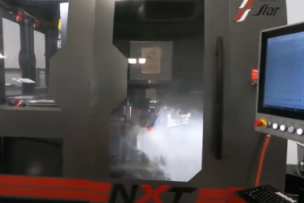Whether you call them maintenance-grade or general-purpose, it’s essential to know when to replace cutting tools, and what to replace them with.
Maintenance and repair departments, prototype and development firms, academic and government research facilities—these are just a few of the manufacturing environments where machine tool operators are not trained machinists, but rather mechanics, design engineers, and university professors or their students, whose grasp of basic machining and cutting tool practices is often incomplete.
Unfortunately, cutting tools are frequently misapplied in these situations. Edge wear and damage that would set off alarm bells in a production shop are either overlooked or misunderstood. The wrong grade or geometry might be used, with improper feeds, speeds and depths of cut making matters even worse. The result is waste and lost time, with less than stellar performance from machine shops under the same pressures as their skilled CNC counterparts.








